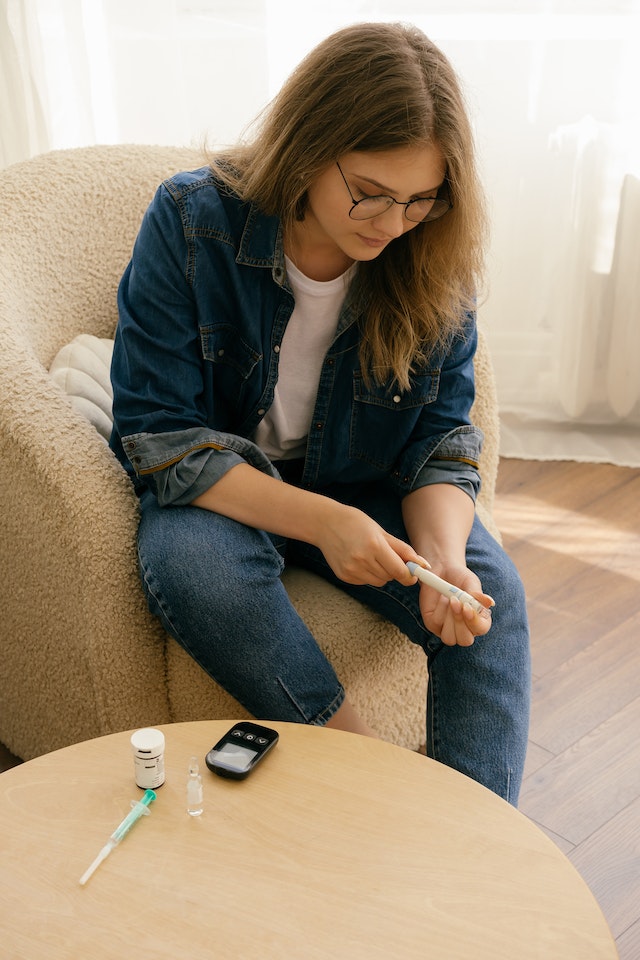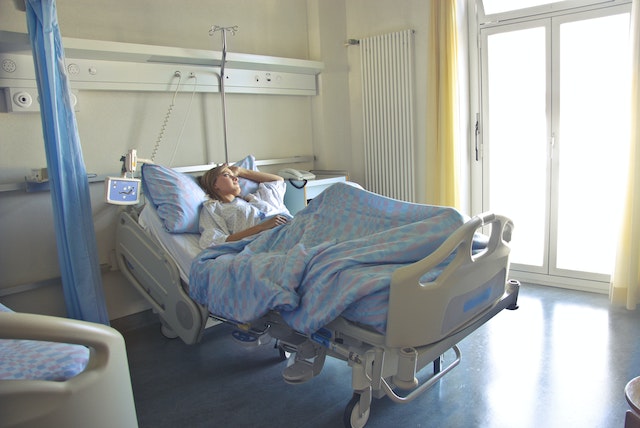It is important to know that symptoms of type 1 diabetes in women can affect anyone at any age, especially in childhood so it is also called juvenile diabetes.
Diabetes is an important condition that affects your life as it causes an increase in blood glucose levels.
There are 2 types of diabetes: type 1, and type 2 diabetes mellitus.
In type 1 diabetes [autoimmune disease] your pancreas can’t produce insulin so your body cells can’t convert glucose into energy.
We are concerned in this article with symptoms of type 1 diabetes in women.

Symptoms of type 1 diabetes in women:
It is important to know that early symptoms of type 1 diabetes in women can develop suddenly and may be mistaken for other illnesses.
These symptoms can develop more quickly in young people than in adult
Common symptoms of type 1 diabetes in women:
Frequent urination [ poliuria ]:
One of the important symptoms of type 1 diabetes in women is the increased need to urinate more frequently.
Running constantly to the bathroom particularly to get rid of excess sugar in your blood.
You may urinate in large amounts more than normal, this can lead to dehydration which affects your kidney.
The kidney cannot reabsorb excess glucose and can't direct it back into the bloodstream.
Excess glucose ends in the urine and pulls more water which results in more urine.
Extreme thirst [polydipsia]:
You can feel more thirsty than normal due to the effect of dehydration caused by increased urination.
Dehydration can lead to nausea, headache, dizziness, and fainting.
Diabetic ketoacidosis, organ failure, coma, and death may occur.
Dehydration also may lead to an increase in blood sugar levels as urine and glucose are less expelled.
Extreme thirst can lead to a dry mouth.
Increased appetite:
You can feel hungry all the time, and this may occur because the body can't get proper energy from the food you eat.
An Unexpected loss of weight:
You may lose weight without trying although you are eating if the body continues to lose glucose in urine instead of absorbing it.
This can occur due to polyuria which takes calories with it out.
Heart disease:
The risk of heart disease can increase by about four times in women due to hyperglycemia which damages blood vessels and nerves which control the heart.
Tingling, pain, and numbness in the hands:
High blood sugar can damage nerve fibers leading to diabetic neuropathy.
Diabetic neuropathy causes tingling and numbness in different parts of the body as hands, feet, and legs.
Feeling fatigued:
Fatigue occurs due to:
- Physiological factors due to acute or chronic hyperglycemia.
- Psychological factors such as depression and emotional distress due to the progress of diabetes.
- Lifestyle factors like sedentary life, obesity, and weight control issues.
The blurring of vision, stupor, and unconsciousness:
The lenses of your eyes swell causing distorted vision or blurring.
If not treated well, diabetic retinopathy can occur.
Mood changes and irritability:
You may experience mood swings due to blood sugar levels, stress, depression, anxiety, and mental health conditions.
Slow healing of cuts, wounds, and sores:
Blood circulation may become slow due to the effect of uncontrolled diabetes makes the delivery of nutrients to wounds difficult.
Sweet-smelling breath, heavy breathing:
Fruity odor and casual (rapid deep) breathing are caused by metabolic acidosis due to the effect of diabetic ketoacidosis.
All of these may occur suddenly and also may affect people under the age of 30.

Other symptoms of type1 diabetes in women
Recurrent vaginal infections:
It is one of the most important symptoms of type 1 diabetes in women.
High blood sugar can trigger the growth of candida albicans fungus which may lead to vaginal or oral yeast infection.
These infections also called thrush which has the following symptoms: vaginal itching, discharge, painful sex, soreness of the vagina, and white coating spots on the tongue, inside the mouth, and the vagina.
Type 1 diabetes can lead to recurrent vaginal infection so you have to control your blood sugar.
Urinary tract infections:
Diabetic women may have a higher risk of urinary tract infections than non-diabetic women.
Urinary infections are one of the annoying symptoms of type 1 diabetes in women.
High blood sugar levels cause poor circulation which reduces the ability of your body to fight infections.
Also, your bladder may not empty urine because of diabetes so it creates a good environment for the growth of bacteria.
Drinking lots of water, urinating often, and not waiting until your bladder is full, is important advice for you.
You may have many symptoms such as painful urination [dysuria], and cloudy or bloody urine.
If urinary tract infection is not treated there will be a risk of renal infections.
Menstrual cycle changes:
Longer or heavier periods can occur as any other symptoms of type 1 diabetes in women particularly when increasing food cravings.
You might need to change your dosage of insulin if needed, and also healthy food and getting enough sleep help to improve your case.
Sexual behavior:
It is one of the most worrisome symptoms of type 1 diabetes in women.
Hyperglycemia can cause decreased blood flow and hormonal changes, nerve damage which causes diabetic neuropathy.
All of these can lower your interest and ability to have sex and cause a dry vagina, and soreness which makes intercourse uncomfortable.
You can use vaginal lubricants and do exercises to increase your interest in sex.
After menopause:
The symptoms of type 1 diabetes in women after menopause can occur due to less production of estrogen in your body.
This can lead to ups and downs in your blood sugar.
Your sleep may be disrupted due to weight gain, hot flashes, and night sweats which make the control of blood sugar hard.
Sexual problems may increase due to vaginal dryness and nerve damage.

Severe symptoms of Type 1 diabetes in women
Diabetic ketoacidosis:
It is one of the most serious symptoms of type 1 diabetes in women.
It is a life-threatening condition in which your body seeks energy from stored fat.
Muscles and fat break down into ketone bodies to get energy which accumulates in your body leading to acidosis [large amounts of acids in the blood].
High levels of glucose can harm your nerves and small blood vessels which affects the eyes, kidneys, and heart.
This can make you get hardened arteries, atherosclerosis which can lead to heart attacks and strokes.
There is an increase in blood glucose levels above 240 mg/dl and flu-like symptoms (weakness, fatigue, aches, nausea, vomiting, or abdominal pain).
Also, there is frequent micturition, excessive thirst, severe loss of weight, lethargy, drowsiness, exhaustion, confusion, and difficulty concentrating.
Fruity-smelling breath, rapid breathing as the body tries to get rid of ketone and acids may occur.
Stupor, unconsciousness, and death may occur if untreated.
Conclusion:
All symptoms of type 1 diabetes in women are due to the absence of insulin, so you should replace the insulin that your body needs.
If type 1 diabetes is not treated it may lead to serious health problems and even death.
All the symptoms can appear at any age but increase in menopause.
If you are concerned well with your medicine these symptoms will improve.
Read more about:
menopause and diabetes: what is the relationship?


You must be logged in to post a comment.